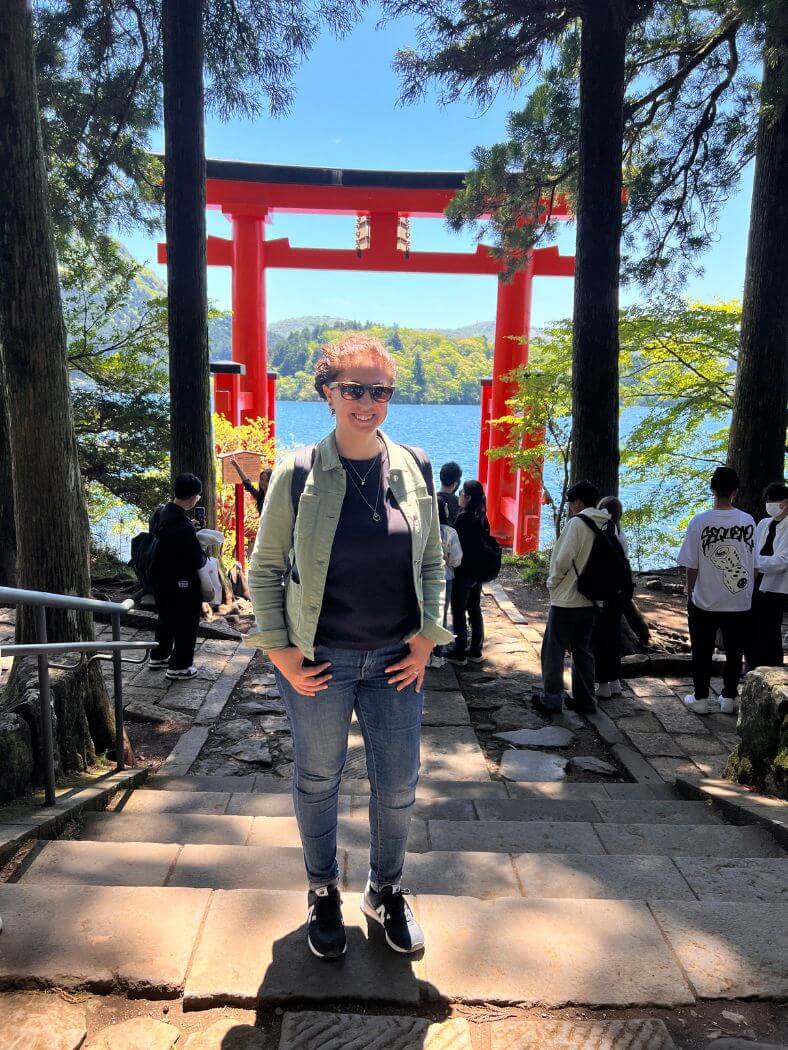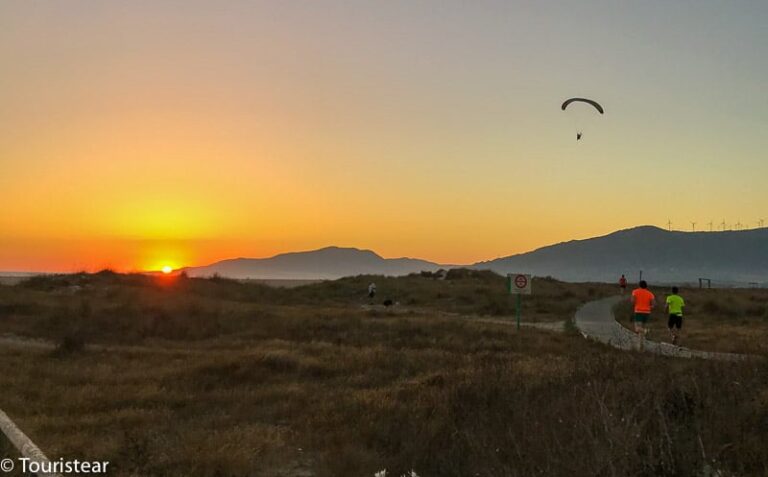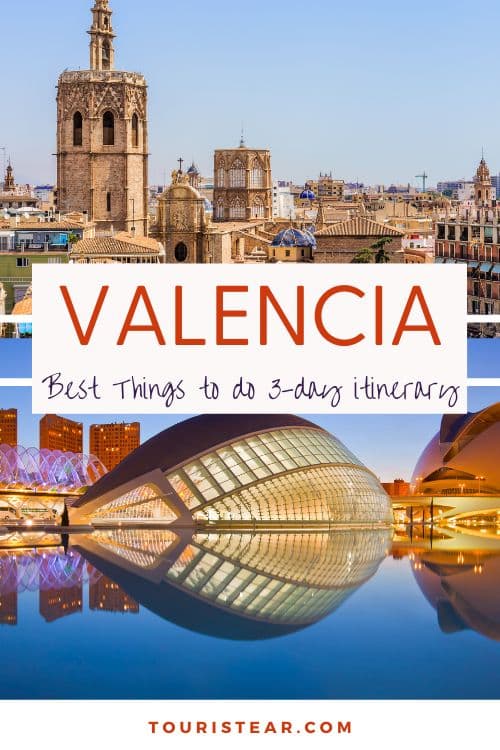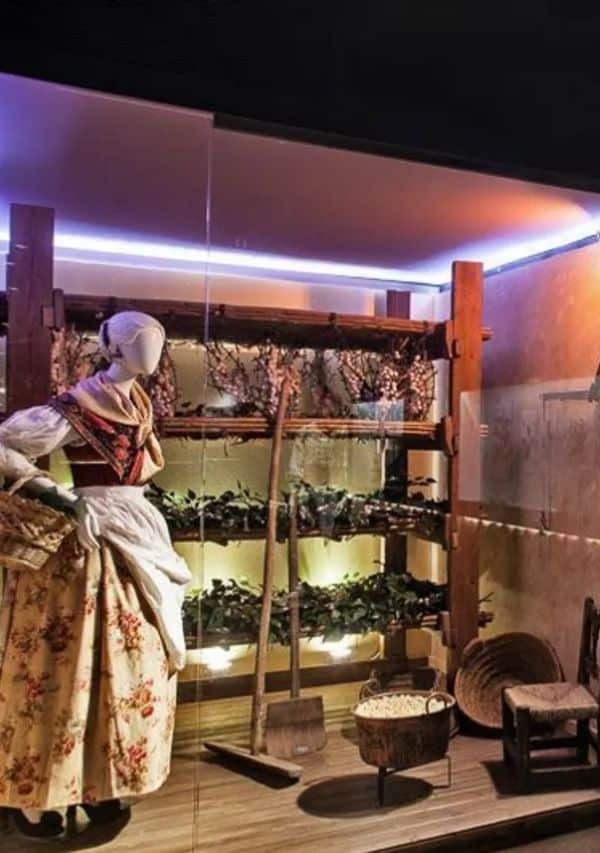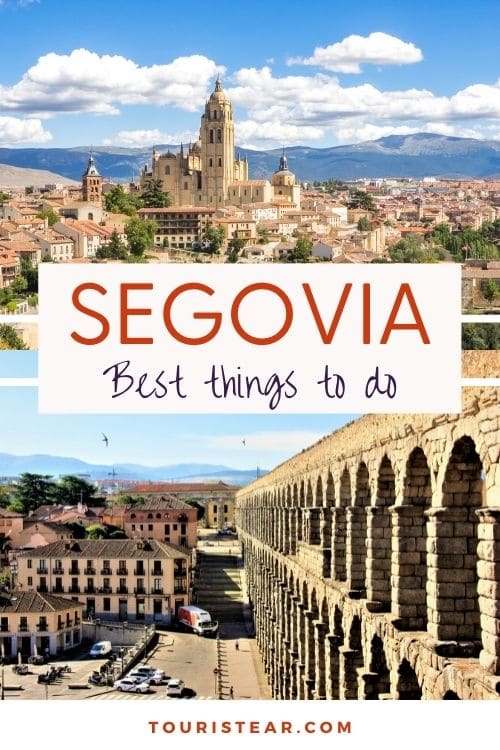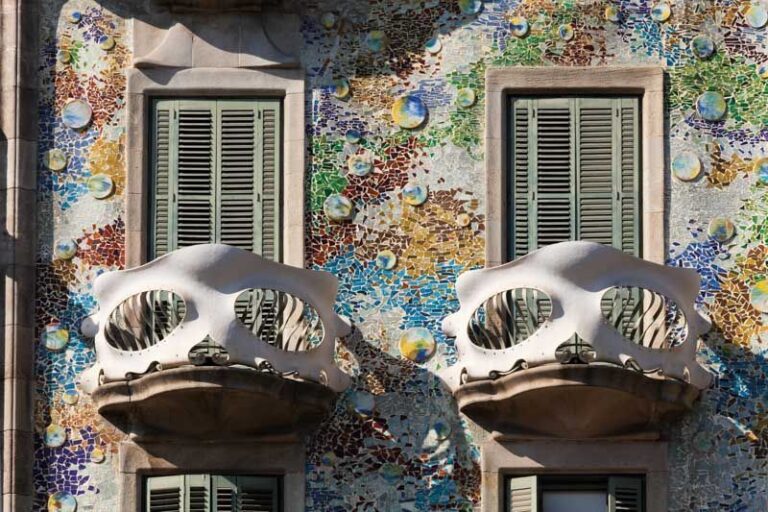Best Things to Do in Bilbao in 1 or 2 Days Itinerary
What to see and do in Bilbao in 1 or 2 days is something we have been asked many times. For this reason, we prepared a 2-day trip itinerary to Bilbao and will tell you everything we saw during these days so you can choose your preferred places and plan your trip.
We have been to Bilbao a few times, but this time I think we visited it more relaxed and enjoyed the city more, probably because we had a plan of what we wanted to see.
Bilbao can also be a good starting point for your road trip to the north of Spain.
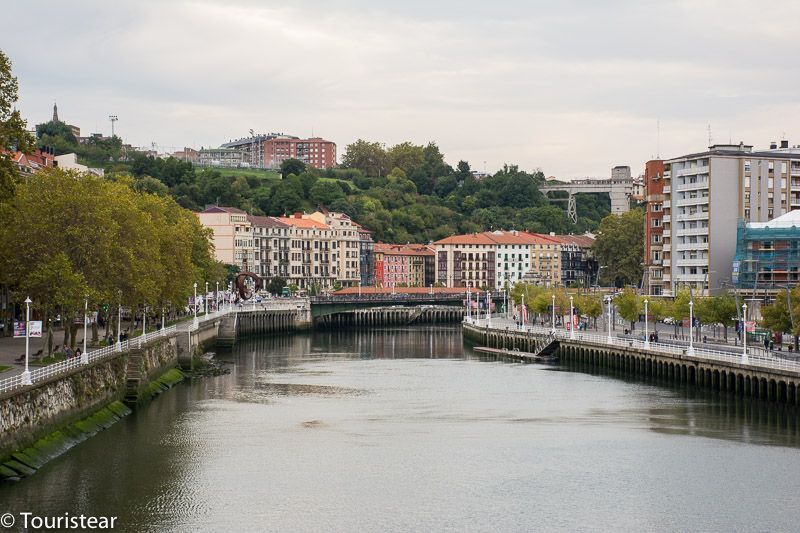
What to visit in Bilbao? Where to Start
On your first visit to Bilbao, the first thing you have to do is visit the Guggenheim Museum. But Bilbao is much more. Read on, and I’ll tell you all about it!
Guggenheim Museum of Bilbao
Visit the Guggenheim Museum is a must-do in Bilbao on your first trip.
This museum brought life back to Bilbao; in it, you find works of art of all kinds, some very curious. It was designed by the famous architect Frank Gehry, known for creating buildings with almost fantastic shapes worldwide.
Also, look at the temporary exhibitions; we saw “Francis Bacon, from Picasso to Velázquez.”
A must is to do the Free Walking Tour in Bilbao with a guide.
After visiting the museum, walk around this beautiful area.
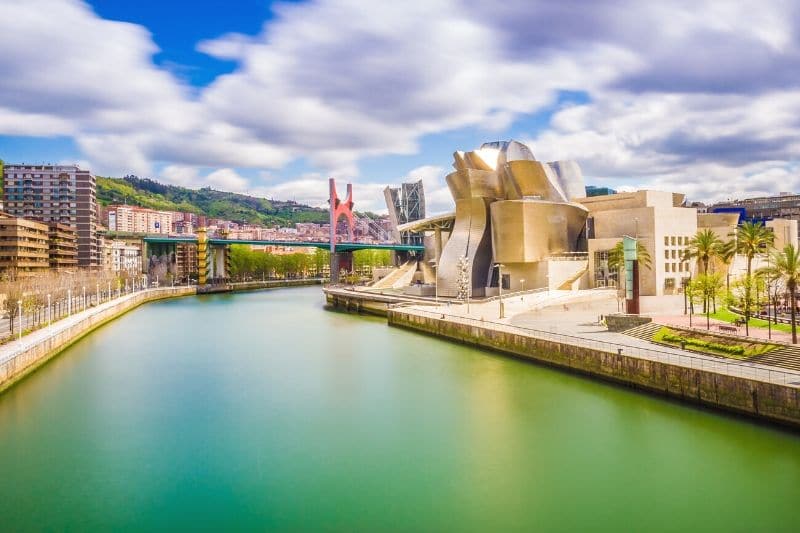
First, along the bank of the Guggenheim to the Zubizuri bridge. One of the pedestrian bridges over the Nervión estuary.
If this is your first time in Bilbao, a visit to the Guggenheim is a must!

Iberdrola Tower
It is a 165-meter-high skyscraper located near the Guggenheim Museum. It was inaugurated in 2011 and is the eighth-tallest building in Spain.
La Salve Bridge
It was previously called Puente de Príncipes de España (Bridge of Princes of Spain) until the change of its name in 2016.
It is so called because the fishermen entering the city by the estuary began to sing the Salve to the Virgin of Begoña, which can be seen right from the bridge’s height.
It is located next to the Guggenheim Museum and includes a staircase with direct access to the museum.
Zubizuri Bridge
Continuing along the Guggenheim’s shore, you’ll reach the Zubizuri Bridge, also called the Calatrava Bridge. One of the pedestrian bridges over the Nervión estuary.
Its name means “white bridge” in Basque and has an interesting controversy behind its construction.
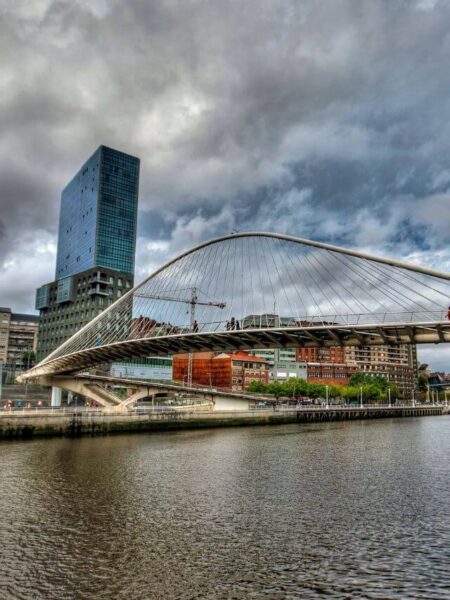
The bridge was designed by Santiago Calatrava, a very famous architect in Spain and abroad. Among his works is, for example, the City of Arts and Sciences of Valencia. The citizens wished to have a Calatrava work adorning Bilbao.
It turns out that the glass used for the floor of the bridge was so slippery when it rained (which happens quite a lot in Bilbao) that many pedestrians fell while crossing the river.
After evaluating several options, the floor was finally covered with anti-slip strips.
Artxanda Funicular
Once you finish your visit to the museum, cross to the other side and take the Artxanda funicular. It is straightforward to reach and very well indicated.
The Artxanda funicular takes you through the mountain, to an elevated part of the city, from where you can enjoy beautiful views of Bilbao.
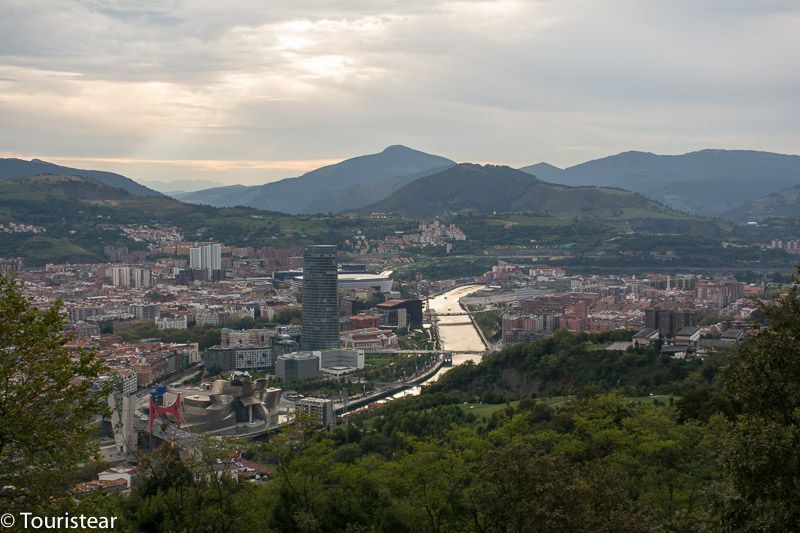
You can see how the new integrates with the old, surrounded by mountains and the Nervión estuary that meanders through the city.
You can walk around Artxanda, have a drink in one of its bars, and then go down again on the funicular, or you can do the guided tour that includes the funicular ride.
The price of the funicular is 0,90€ each way.
Begoña Neighborhood
Once you have visited the funicular and enjoyed one of the viewpoints of Bilbao, you can go to the Begoña neighborhood. I’ll tell you about our visit; we were lucky they were having a party.
When we arrived in the Begoña neighborhood, it was crowded, although we were lucky and managed to park without too much difficulty.
As we approach the church of Begoña, we see that they are celebrating. We didn’t know it was the day of their big feast day on October 11. There were stalls selling glazed doughnuts, typical sweets, and tasty savory things.
We ordered a talo each. A talo is a corn tortilla, crepe-like, filled with typical local products. Fer ordered a loin steak and I ordered a sausage steak, with a txakoli and a cider.
In addition, the talos are made on the spot, and you can see how they made them. Very curious.
The Begoña Church is in late Gothic style and is a landmark of Bilbao. We could not enter because they were celebrating mass, and there was no room inside the church.
We could peek through an open side door, and the truth is that it looked very nice.
Etxebarria Park
Following the crowd a bit, we descend and arrive at Etxebarria Park, where you can see a massive chimney in its center from an old factory that once operated in this place.
We took a break from walking and sitting on a bench in the park while people of all ages were out skateboarding. We didn’t want to go too far because the car was at the top, behind the church of Begoña, and there was a good climb.
When we decided to turn back to the car, we saw that in one of the streets, there were different groups in procession, dressed in their typical costumes. They were on their way to the church of the Virgin of Begoña.
I always find it interesting to see the traditional festivals of the different places I visit. Except in those where animals are mistreated.
Bilbao City Hall
The building where the City Hall is located was built at the end of the 19th century and is in the French Second Empire style.
It is an impressive work, with many details adorning the facade. Unfortunately, we could not go inside, but we know it has several rooms in different styles that are very luxurious.
Once in the car, we headed back to the hotel area. We had a pintxo dinner, as it could not be otherwise, and then we went to rest.
Take a look at What to see in Vitoria Gasteiz and plan your trip through the Basque Country.
The Old Town of Bilbao
I will tell you what you can see in Bilbao on your second day of visit.
The first thing you can do is to visit the old part of Bilbao and walk through its narrow streets.
The Plaza Nueva (The New Square)
We arrived at the Plaza Nueva, where the stalls were being set up to sell second-hand books and other antiques for collectors.
We could also see groups of tourists on bicycles receiving explanations about the Plaza and people gathering to hang out and chat with friends.
Bilbao’s Plaza Nueva was inaugurated in 1851, after 65 years of construction. Today it is located in the old part of the city and here locals and tourists gather for pintxos and txakoli.
We also took the opportunity to stop at one of the bars in the area and check out the local atmosphere.
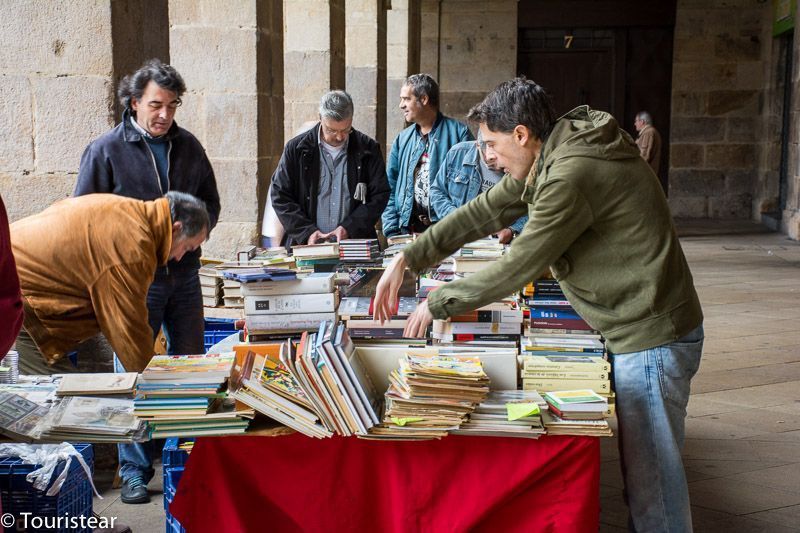
Bilbao Cathedral
In the center of the Old Town is the Cathedral of Santiago, located in the Plaza de Santiago. The cathedral of Bilbao has been consecrated to the apostle St. James, patron saint of the city since 1643.
It was built in the 15th century and is gothic mainly in style, and the tower and façade are neo-Gothic.
Admission is free and guided tours of one hour are organized; you can ask for the schedule here: Tlf. 944320125.
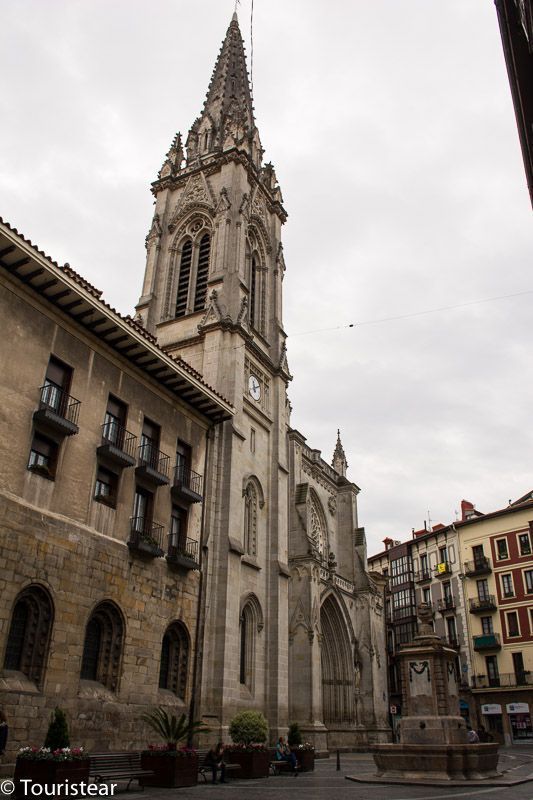
The seven medieval streets
Leaving the Cathedral, we will walk through the Seven Streets: Somera, Artecalle, Tendería, Belosticalle, Carnicería Vieja, Barrenkale, and Barrenkale Barrena. This is supposed to be where Bilbao was born.
Las Siete Calles are full of life, with new and old stores. Full of modern and classic bars, and it makes you want to enter them all.
We walked the 7 streets slowly and then took a stroll along the riverbank.
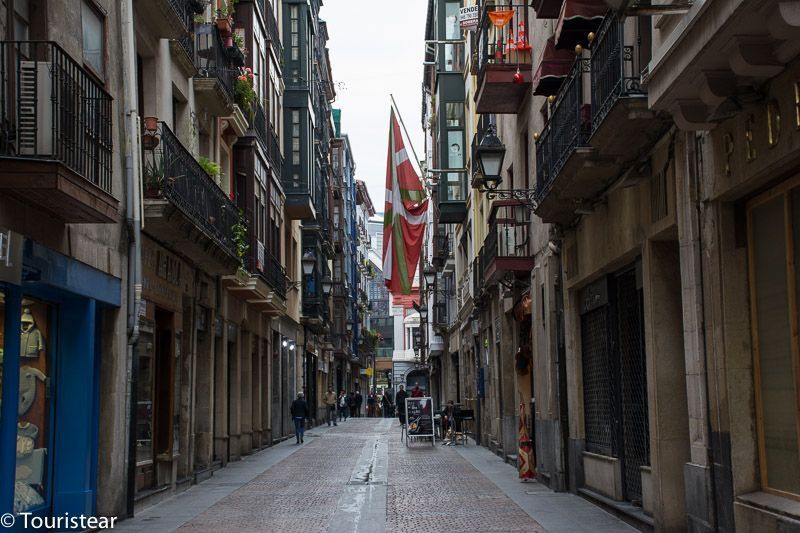
La Ribera Market
It is located on the river bank, close to the Casco Viejo in the old Plaza Mayor or Vieja. It is the largest covered market in Europe, with a surface area of 10,000m2.
Inside are three floors with stalls selling all kinds of products: fruit and vegetables, meat, fish, and, of course, pintxos.
The truth is that inside its size is impressive and, as you know, I always find a moment to visit the typical markets of the places I visit; so I could not miss it 😉
In 1990 it was registered in the Guinness World Records for being the most complete Municipal Food Market in Europe.
San Antón Church (San Antonio Abad) and bridge
This church is next to the Mercado de la Ribera and the San Antón bridge. It is of Gothic style from the end of the 15th century.
It is the most important church in Bilbao, thanks to its history and its location, in the heart of the Old Town and next to the bridge of San Antón. It even appears on the town’s coat of arms.
The San Antón Bridge is the oldest bridge in Bilbao. Its history dates back to the 14th century; in fact, documents confirm that it was in operation before 1318!
It was the only bridge linking the two banks of the estuary for a long time, and many people were against building more bridges to not take away the deserved importance of San Antón. Next to the church of the same name, it appears in the coat of arms of Bilbao.
It was remodeled several times due to damages suffered during the wars and because of heavy floods, but it still has that old medieval air.
Concordia Station
On the way, we pass in front of the Estación de la Concordia, the railroad station that connects Bilbao with Santander.
It has a beautiful modernist facade built in 1902 and restored during the last decade.
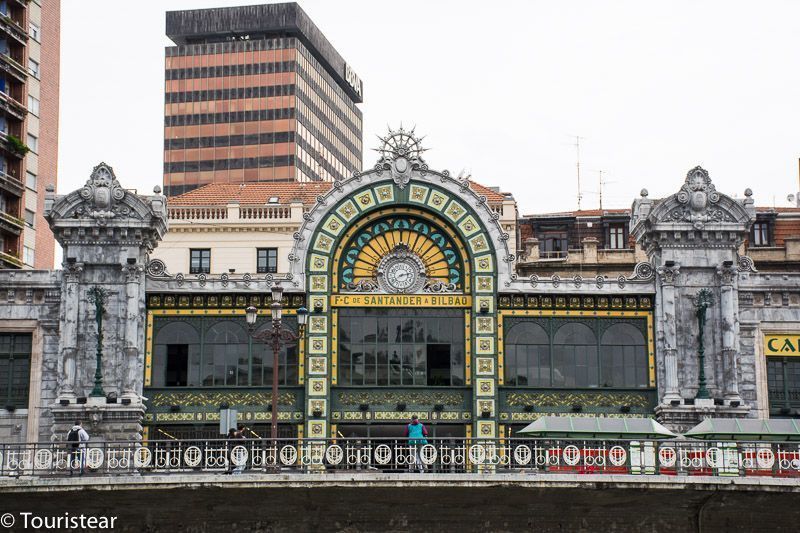
Arriaga Theater
We also saw the Arriaga Theater, from the 19th-century Neo-Baroque style, which we could not enter but is said to be very beautiful inside.
We continue our way to the car and say goodbye to the city of Bilbao, which has always treated us well and to which we always want to return.
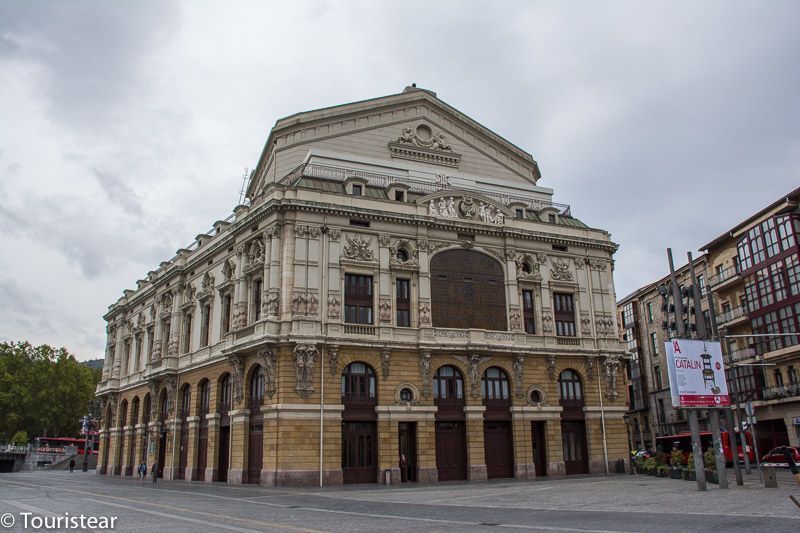
St. Nicholas Church
In front of the theater is the 18th-century baroque church of San Nicolás.
It was formerly a hermitage in the fishermen’s quarter located on the outskirts of the village.
The church was built with white stone. On both sides of the facade there are two towers and in the middle, an impressive dome.
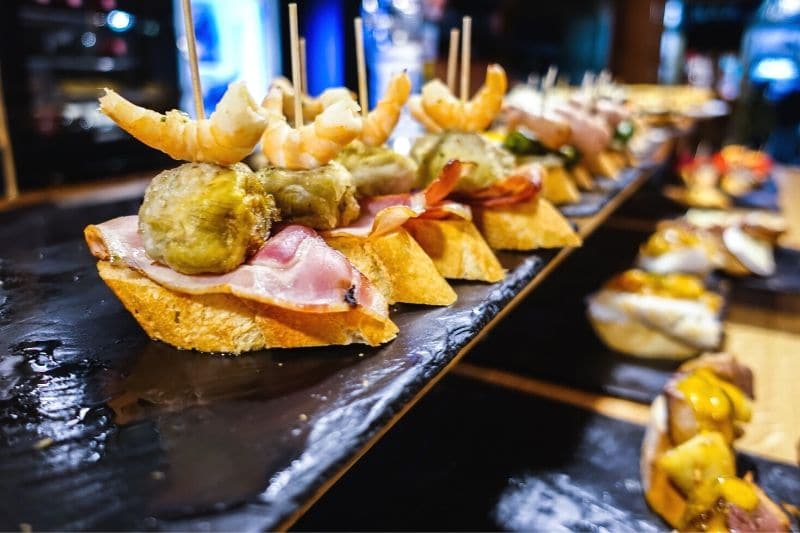
Basque Museum of Bilbao
The museum is in Plaza Unamuno, in the Old Town of Bilbao. It has been collecting objects from the history of the Basque Country for more than 100 years.
If you want to delve into the past of this region, from prehistoric times to the present day, this is the place for you. With more than 20,000 objects, including costumes, utensils, furniture, etc. On the top floor, there is a spectacular model of the region.
On the other shore of the estuary
Crossing Nervión, we enter the city’s most modern part, Bilbao’s downtown.
The old wine warehouse – Azkuna Zentroa
The Bilbao architect Ricardo Bastida built this building at the beginning of the 20th century. It is known as the old wine warehouse, the Alhóndiga or Azkuna Center.
It was a wine and liquor store until the 1970s, abandoned and forgotten. But in the 90s of the last century, it was decided to renovate it, and now it is a cultural and leisure center with bars, restaurants, a library, a gym, cinemas, and exhibition halls.
Gran Vía de Don Diego López de Haro
It is one of the main streets of the Basque capital, full of stores, restaurants, and bars. It is 1.5 m long and about 50 m wide and during the tour you can see many classic buildings.
In the middle, we find the Plaza de Moyúa or Plaza Elíptica, the nerve center of the widening of Bilbao. It is surrounded by old buildings that recall the city’s former status.
Part of Gran Vía is pedestrian-only and surrounded by parks. It is an enjoyable walk to get to know this northern city a little better.
Doña Casilda de Iturrizar Park
Along the northern part of Gran Vía extends the Doña Casilda Park. Its construction began in the early twentieth century and is in the English style.
Inside we can walk along its paths, see the pond with ducks, swans, and peacocks and see a pergola where concerts are organized. The park is also home to the Museum of Fine Arts.
Bilbao Fine Arts Museum
It is considered one of the most important museums in Spain and contains more than 10,000 works from the 13th century to the present.
The museum was created in 1908 and opened in 1914. But during the civil war, the works were moved to other places. After the war, the building where it is currently headquartered was built.
It is highly recommended to visit it since you can learn a lot about art history in Spain and appreciate the works of the most famous painters.
Maritime Museum – Itsasmuseum
Itsasmuseum (itsas in Basque means sea) is located on the banks of the Nervión River, near Doña Casilda Park, on the land formerly occupied by the shipyards.
It was inaugurated in 2003 and presents permanent and temporary exhibitions on the history and importance of the estuary in the life of the people of Bilbao.
It has a surface area of 27,000m2 of indoor and outdoor exhibits. You can see old shipyard docks, ships and naval elements, utensils, and a restored crane nicknamed “La Carola.”
San Mamés Stadium
For soccer fans, an essential stop is the Athletic Club stadium or La Catedral. Located near Itsasmuseum, it was renovated in 2013.
Inside you can visit the museum, and the official Club store or eat in one of the three restaurants. Or go watch a soccer game! Here I leave you the official website of the stadium.
Marzana Pier
Just in front of the Mercado de la Ribera and the Church of San Antón, across the river, is located the Muelle Marzana. According to some, an area next to the estuary full of bars and restaurants with the best terracing in Bilbao.
If you are from Bilbao or know it well, what places would you recommend me to go for pintxos on my next visit?
What to See on the Outskirts of Bilbao
Outside the city, a few sites are worth a visit. They are not very far away; you can see them at your leisure if you reserve a few hours.
San Juan de Gaztelugatxe
It is a charming little island near Bilbao. The best option to visit it is with an organized tour since it includes round-trip transportation.
During the visit, you will walk along the zigzagging bridge, climb the stairs to the top of the island, and visit the Dragonstone Fortress and the hermitage. Finally, a walk through the fishing village and Guernica.
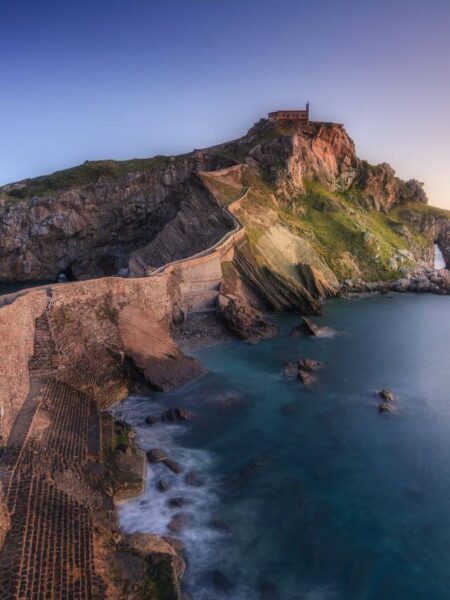
Butron Castle
The castle is in the town of Gatika, halfway between Bilbao and San Juan de Gaztelugatxe. It is a building of medieval origin with beautiful neo-Gothic remodeling located on a hill and surrounded by woods.
It was abandoned for many years and finally rebuilt at the end of the 19th century. It was declared a Historical Heritage. This castle reminded me of the ones in southern Germany; its towers and ornaments; left me enchanted!
Bridge of Vizcaya or Hanging Bridge in Portugalete
This bridge was the first ferry in the world to be built with a metal structure. It celebrated its 125th anniversary in 2019 and is one of eight still preserved worldwide.
It was built during the Industrial Revolution and has been inscribed on UNESCO’s World Heritage List since 2006. Today it has become an attraction for tourists and locals who hold many events there.
San Sebastian or Donosti
Being in the north of Spain, you can’t miss San Sebastian. Indeed you are familiar with La Concha Beach and its film and music festivals.
Take a look at the excursion to San Sebastian from Bilbao.
Where to Stay in Bilbao
- We stayed at the hotel Silken Indautxu.
- You can see more accommodations on the booking website.
How to Get to Bilbao
Bilbao is accessible by land, sea, and air, so choose the option that suits you best.
- By car: by the AP8 highway (payable) or the A-68 national road. Do you need to rent a car?
- By public transport: Bilbao is connected to the largest cities by bus, train, and AVE. Find your route here.
- By plane: Bilbao airport is about 10 km from the city center. It has connections with other Spanish and foreign cities. Search for your flight here!
Guided Tours in Bilbao and its Surroundings
- Free Tour with a guide through Bilbao
- Tour through the sets of GAME OF THRONES
- Road Trip through northern Spain
- Best Things to do in Vitoria-Gasteiz
Save it for later on Pinterest
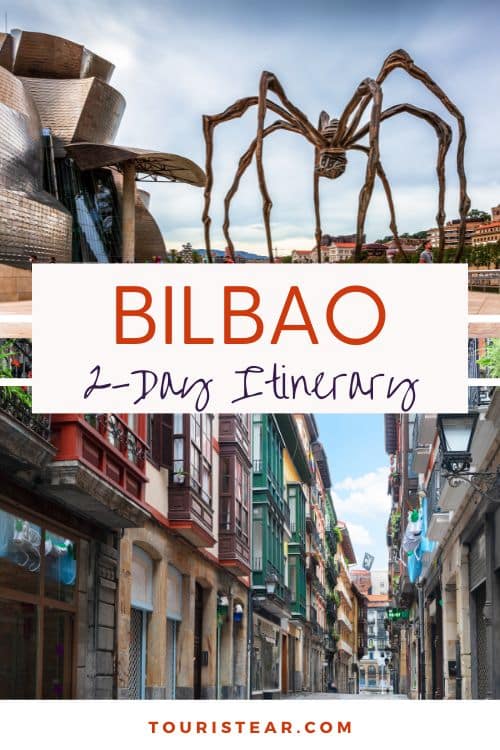
Last Updated on 12 April, 2024 by Veronica
Disclosure: Some of the links on this post are affiliate links, meaning at no additional cost to you, I may earn a small commission if you click through and make a purchase.
Author: Veronica
Vero, a seasoned traveler, has explored 25 countries and lived in five, gaining a rich perspective and fostering an infectious passion for travel. With a heart full of wanderlust, Vero uncovers the world’s hidden gems and shares insights, tips, and planning advice to inspire and assist fellow adventurers. Join Vero and let the shared passion for travel create unforgettable memories.
